A Report on Reasons Why Incumbents are Beaten by Challengers
VerifiedAdded on 2023/04/07
|7
|1198
|274
Report
AI Summary
This report analyzes the reasons why incumbents are often beaten by challengers in business, using the case of Nokia versus Apple's iPhone as a prime example. It explores Clayton Christensen's theory of disruption and the business model theory, focusing on customer experience, business models, technology, service systems, and people. The report highlights how Apple's iPhone, with its superior user experience, innovative business model, and strategic service system, disrupted Nokia's market dominance. Nokia's failure to adapt its operating system, evolve its business model, and prioritize innovation ultimately led to its downfall, while Apple's visionary leadership and focus on attracting top talent further solidified its success. Desklib provides access to this and other solved assignments for students.
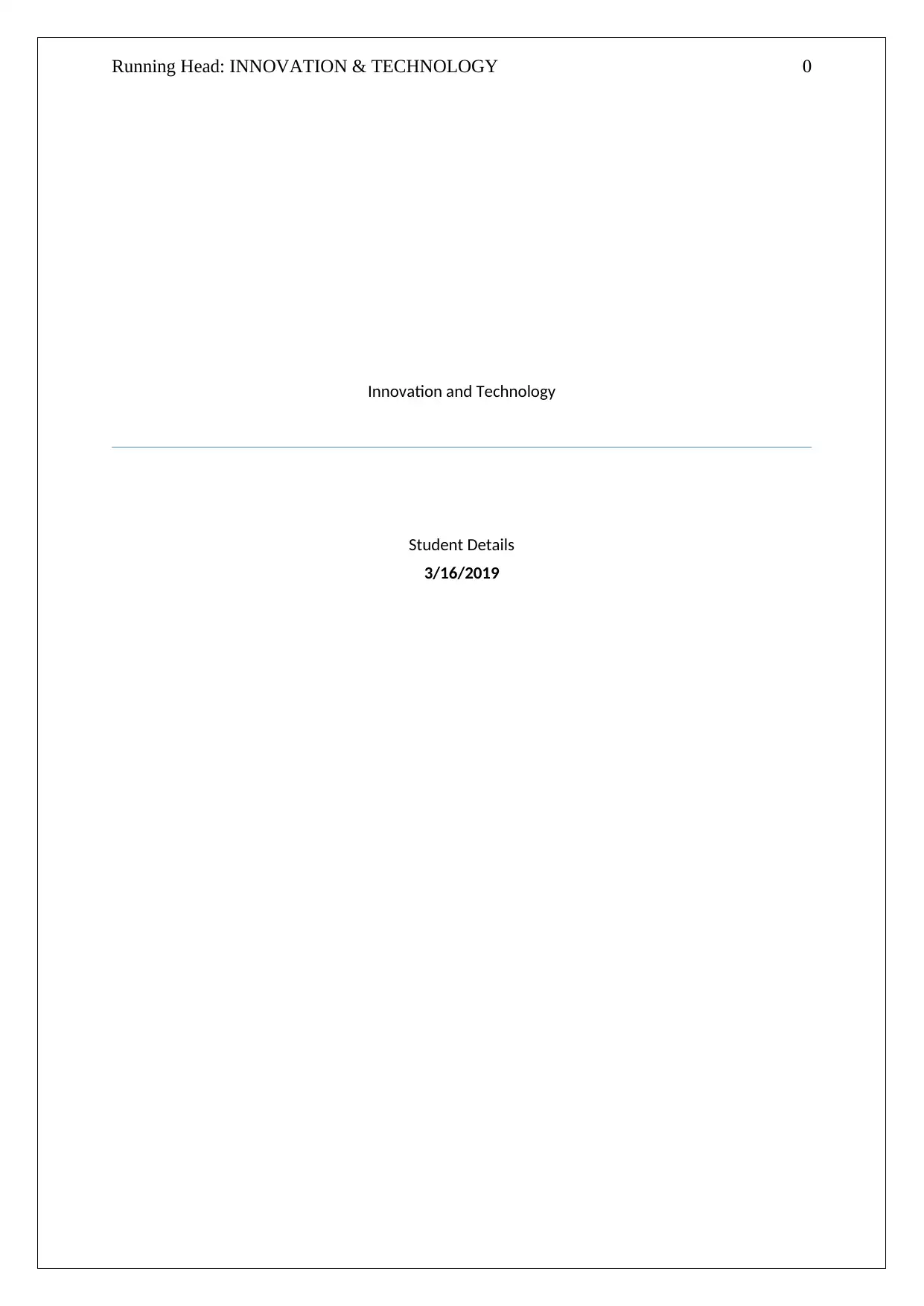
Running Head: INNOVATION & TECHNOLOGY 0
Innovation and Technology
Student Details
3/16/2019
Innovation and Technology
Student Details
3/16/2019
Paraphrase This Document
Need a fresh take? Get an instant paraphrase of this document with our AI Paraphraser
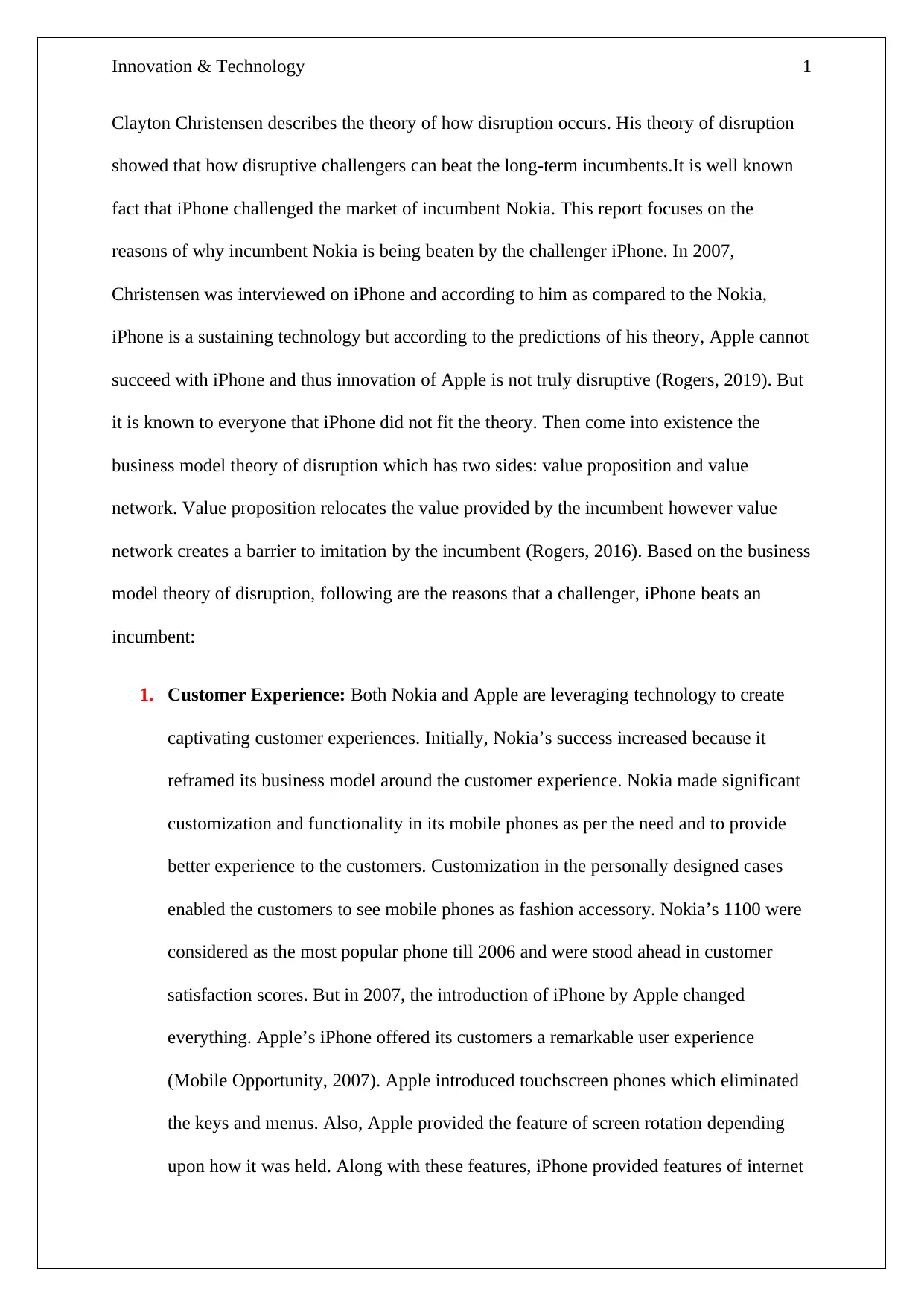
Innovation & Technology 1
Clayton Christensen describes the theory of how disruption occurs. His theory of disruption
showed that how disruptive challengers can beat the long-term incumbents.It is well known
fact that iPhone challenged the market of incumbent Nokia. This report focuses on the
reasons of why incumbent Nokia is being beaten by the challenger iPhone. In 2007,
Christensen was interviewed on iPhone and according to him as compared to the Nokia,
iPhone is a sustaining technology but according to the predictions of his theory, Apple cannot
succeed with iPhone and thus innovation of Apple is not truly disruptive (Rogers, 2019). But
it is known to everyone that iPhone did not fit the theory. Then come into existence the
business model theory of disruption which has two sides: value proposition and value
network. Value proposition relocates the value provided by the incumbent however value
network creates a barrier to imitation by the incumbent (Rogers, 2016). Based on the business
model theory of disruption, following are the reasons that a challenger, iPhone beats an
incumbent:
1. Customer Experience: Both Nokia and Apple are leveraging technology to create
captivating customer experiences. Initially, Nokia’s success increased because it
reframed its business model around the customer experience. Nokia made significant
customization and functionality in its mobile phones as per the need and to provide
better experience to the customers. Customization in the personally designed cases
enabled the customers to see mobile phones as fashion accessory. Nokia’s 1100 were
considered as the most popular phone till 2006 and were stood ahead in customer
satisfaction scores. But in 2007, the introduction of iPhone by Apple changed
everything. Apple’s iPhone offered its customers a remarkable user experience
(Mobile Opportunity, 2007). Apple introduced touchscreen phones which eliminated
the keys and menus. Also, Apple provided the feature of screen rotation depending
upon how it was held. Along with these features, iPhone provided features of internet
Clayton Christensen describes the theory of how disruption occurs. His theory of disruption
showed that how disruptive challengers can beat the long-term incumbents.It is well known
fact that iPhone challenged the market of incumbent Nokia. This report focuses on the
reasons of why incumbent Nokia is being beaten by the challenger iPhone. In 2007,
Christensen was interviewed on iPhone and according to him as compared to the Nokia,
iPhone is a sustaining technology but according to the predictions of his theory, Apple cannot
succeed with iPhone and thus innovation of Apple is not truly disruptive (Rogers, 2019). But
it is known to everyone that iPhone did not fit the theory. Then come into existence the
business model theory of disruption which has two sides: value proposition and value
network. Value proposition relocates the value provided by the incumbent however value
network creates a barrier to imitation by the incumbent (Rogers, 2016). Based on the business
model theory of disruption, following are the reasons that a challenger, iPhone beats an
incumbent:
1. Customer Experience: Both Nokia and Apple are leveraging technology to create
captivating customer experiences. Initially, Nokia’s success increased because it
reframed its business model around the customer experience. Nokia made significant
customization and functionality in its mobile phones as per the need and to provide
better experience to the customers. Customization in the personally designed cases
enabled the customers to see mobile phones as fashion accessory. Nokia’s 1100 were
considered as the most popular phone till 2006 and were stood ahead in customer
satisfaction scores. But in 2007, the introduction of iPhone by Apple changed
everything. Apple’s iPhone offered its customers a remarkable user experience
(Mobile Opportunity, 2007). Apple introduced touchscreen phones which eliminated
the keys and menus. Also, Apple provided the feature of screen rotation depending
upon how it was held. Along with these features, iPhone provided features of internet
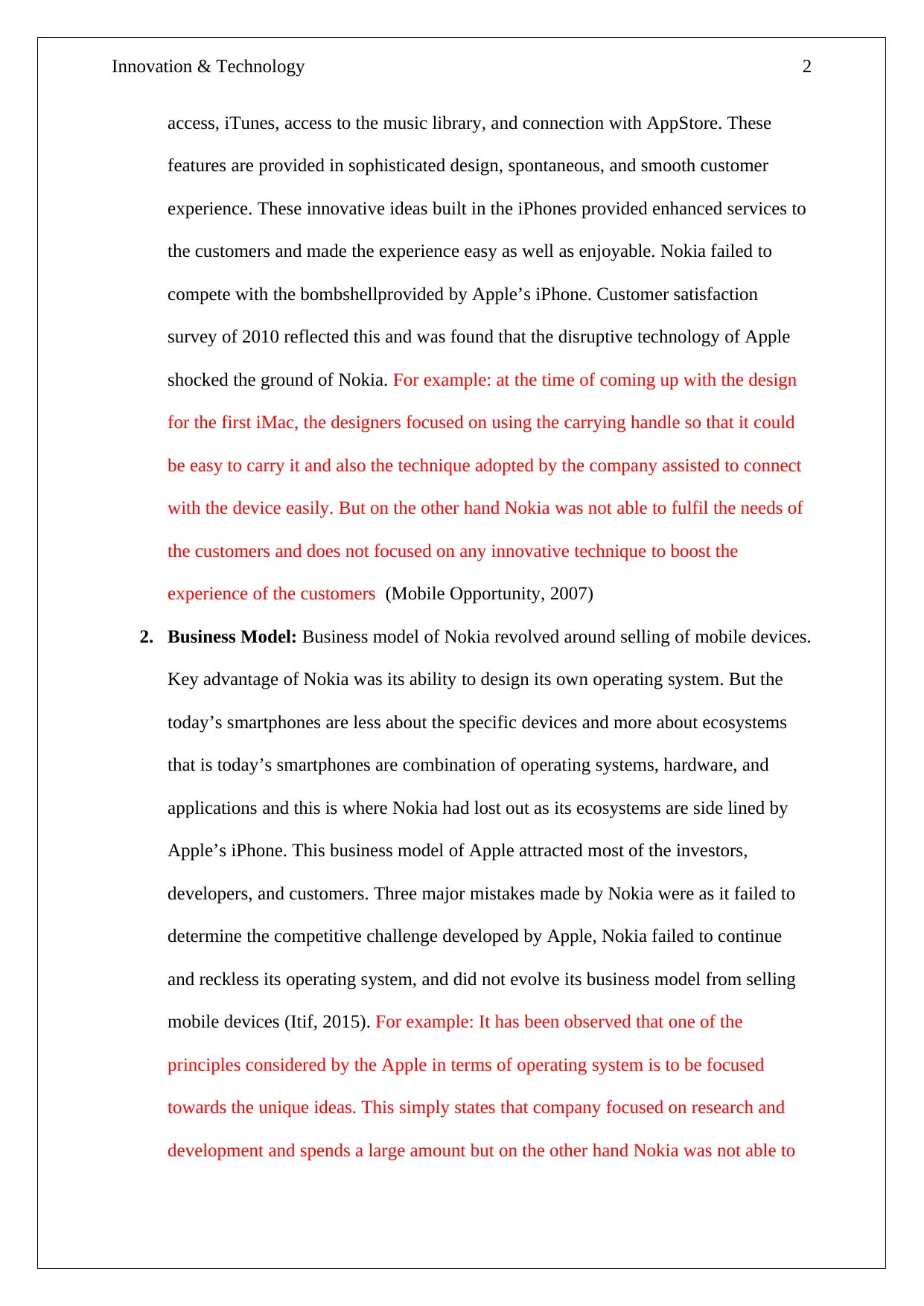
Innovation & Technology 2
access, iTunes, access to the music library, and connection with AppStore. These
features are provided in sophisticated design, spontaneous, and smooth customer
experience. These innovative ideas built in the iPhones provided enhanced services to
the customers and made the experience easy as well as enjoyable. Nokia failed to
compete with the bombshellprovided by Apple’s iPhone. Customer satisfaction
survey of 2010 reflected this and was found that the disruptive technology of Apple
shocked the ground of Nokia. For example: at the time of coming up with the design
for the first iMac, the designers focused on using the carrying handle so that it could
be easy to carry it and also the technique adopted by the company assisted to connect
with the device easily. But on the other hand Nokia was not able to fulfil the needs of
the customers and does not focused on any innovative technique to boost the
experience of the customers (Mobile Opportunity, 2007)
2. Business Model: Business model of Nokia revolved around selling of mobile devices.
Key advantage of Nokia was its ability to design its own operating system. But the
today’s smartphones are less about the specific devices and more about ecosystems
that is today’s smartphones are combination of operating systems, hardware, and
applications and this is where Nokia had lost out as its ecosystems are side lined by
Apple’s iPhone. This business model of Apple attracted most of the investors,
developers, and customers. Three major mistakes made by Nokia were as it failed to
determine the competitive challenge developed by Apple, Nokia failed to continue
and reckless its operating system, and did not evolve its business model from selling
mobile devices (Itif, 2015). For example: It has been observed that one of the
principles considered by the Apple in terms of operating system is to be focused
towards the unique ideas. This simply states that company focused on research and
development and spends a large amount but on the other hand Nokia was not able to
access, iTunes, access to the music library, and connection with AppStore. These
features are provided in sophisticated design, spontaneous, and smooth customer
experience. These innovative ideas built in the iPhones provided enhanced services to
the customers and made the experience easy as well as enjoyable. Nokia failed to
compete with the bombshellprovided by Apple’s iPhone. Customer satisfaction
survey of 2010 reflected this and was found that the disruptive technology of Apple
shocked the ground of Nokia. For example: at the time of coming up with the design
for the first iMac, the designers focused on using the carrying handle so that it could
be easy to carry it and also the technique adopted by the company assisted to connect
with the device easily. But on the other hand Nokia was not able to fulfil the needs of
the customers and does not focused on any innovative technique to boost the
experience of the customers (Mobile Opportunity, 2007)
2. Business Model: Business model of Nokia revolved around selling of mobile devices.
Key advantage of Nokia was its ability to design its own operating system. But the
today’s smartphones are less about the specific devices and more about ecosystems
that is today’s smartphones are combination of operating systems, hardware, and
applications and this is where Nokia had lost out as its ecosystems are side lined by
Apple’s iPhone. This business model of Apple attracted most of the investors,
developers, and customers. Three major mistakes made by Nokia were as it failed to
determine the competitive challenge developed by Apple, Nokia failed to continue
and reckless its operating system, and did not evolve its business model from selling
mobile devices (Itif, 2015). For example: It has been observed that one of the
principles considered by the Apple in terms of operating system is to be focused
towards the unique ideas. This simply states that company focused on research and
development and spends a large amount but on the other hand Nokia was not able to
⊘ This is a preview!⊘
Do you want full access?
Subscribe today to unlock all pages.

Trusted by 1+ million students worldwide
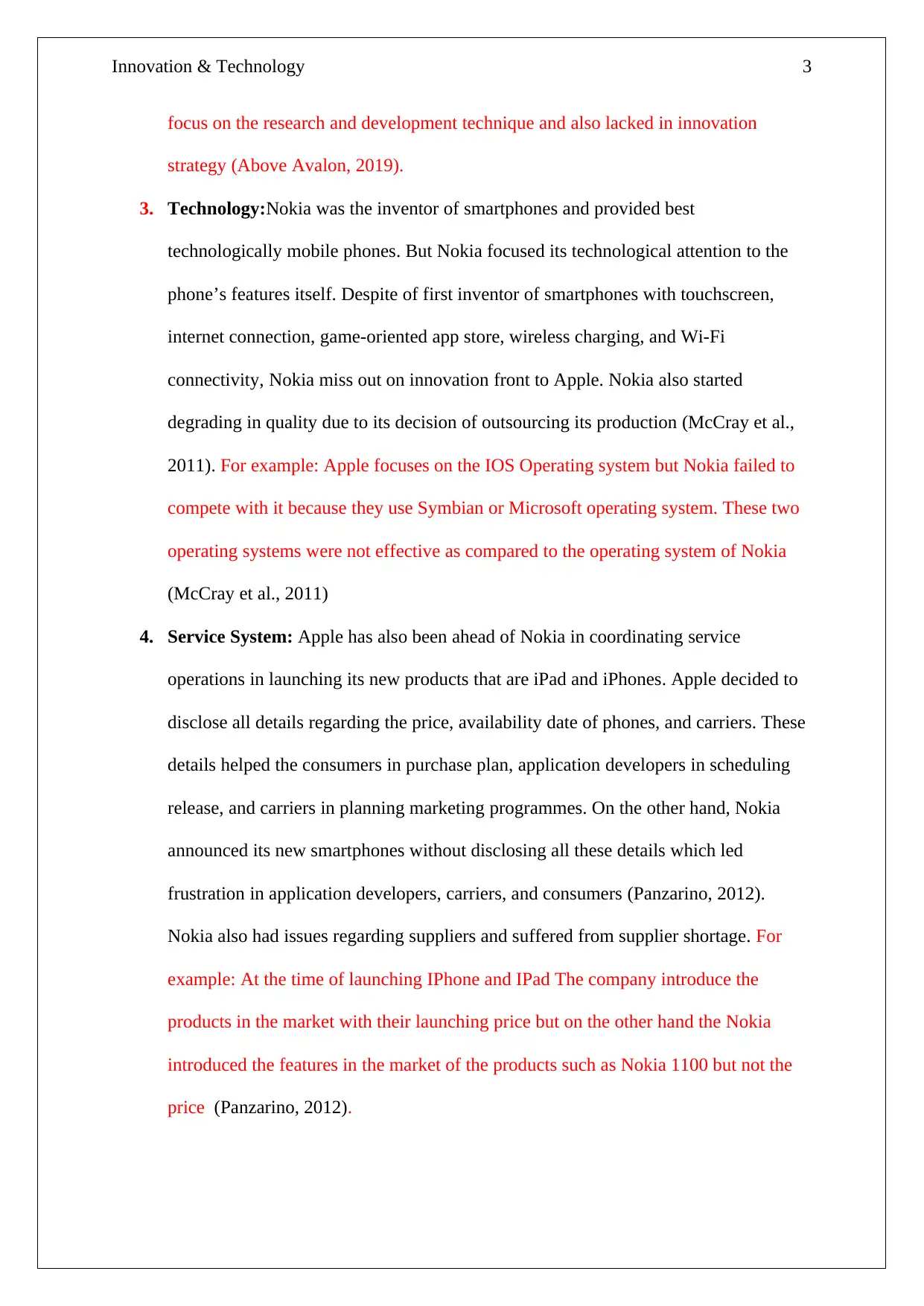
Innovation & Technology 3
focus on the research and development technique and also lacked in innovation
strategy (Above Avalon, 2019).
3. Technology:Nokia was the inventor of smartphones and provided best
technologically mobile phones. But Nokia focused its technological attention to the
phone’s features itself. Despite of first inventor of smartphones with touchscreen,
internet connection, game-oriented app store, wireless charging, and Wi-Fi
connectivity, Nokia miss out on innovation front to Apple. Nokia also started
degrading in quality due to its decision of outsourcing its production (McCray et al.,
2011). For example: Apple focuses on the IOS Operating system but Nokia failed to
compete with it because they use Symbian or Microsoft operating system. These two
operating systems were not effective as compared to the operating system of Nokia
(McCray et al., 2011)
4. Service System: Apple has also been ahead of Nokia in coordinating service
operations in launching its new products that are iPad and iPhones. Apple decided to
disclose all details regarding the price, availability date of phones, and carriers. These
details helped the consumers in purchase plan, application developers in scheduling
release, and carriers in planning marketing programmes. On the other hand, Nokia
announced its new smartphones without disclosing all these details which led
frustration in application developers, carriers, and consumers (Panzarino, 2012).
Nokia also had issues regarding suppliers and suffered from supplier shortage. For
example: At the time of launching IPhone and IPad The company introduce the
products in the market with their launching price but on the other hand the Nokia
introduced the features in the market of the products such as Nokia 1100 but not the
price (Panzarino, 2012).
focus on the research and development technique and also lacked in innovation
strategy (Above Avalon, 2019).
3. Technology:Nokia was the inventor of smartphones and provided best
technologically mobile phones. But Nokia focused its technological attention to the
phone’s features itself. Despite of first inventor of smartphones with touchscreen,
internet connection, game-oriented app store, wireless charging, and Wi-Fi
connectivity, Nokia miss out on innovation front to Apple. Nokia also started
degrading in quality due to its decision of outsourcing its production (McCray et al.,
2011). For example: Apple focuses on the IOS Operating system but Nokia failed to
compete with it because they use Symbian or Microsoft operating system. These two
operating systems were not effective as compared to the operating system of Nokia
(McCray et al., 2011)
4. Service System: Apple has also been ahead of Nokia in coordinating service
operations in launching its new products that are iPad and iPhones. Apple decided to
disclose all details regarding the price, availability date of phones, and carriers. These
details helped the consumers in purchase plan, application developers in scheduling
release, and carriers in planning marketing programmes. On the other hand, Nokia
announced its new smartphones without disclosing all these details which led
frustration in application developers, carriers, and consumers (Panzarino, 2012).
Nokia also had issues regarding suppliers and suffered from supplier shortage. For
example: At the time of launching IPhone and IPad The company introduce the
products in the market with their launching price but on the other hand the Nokia
introduced the features in the market of the products such as Nokia 1100 but not the
price (Panzarino, 2012).
Paraphrase This Document
Need a fresh take? Get an instant paraphrase of this document with our AI Paraphraser
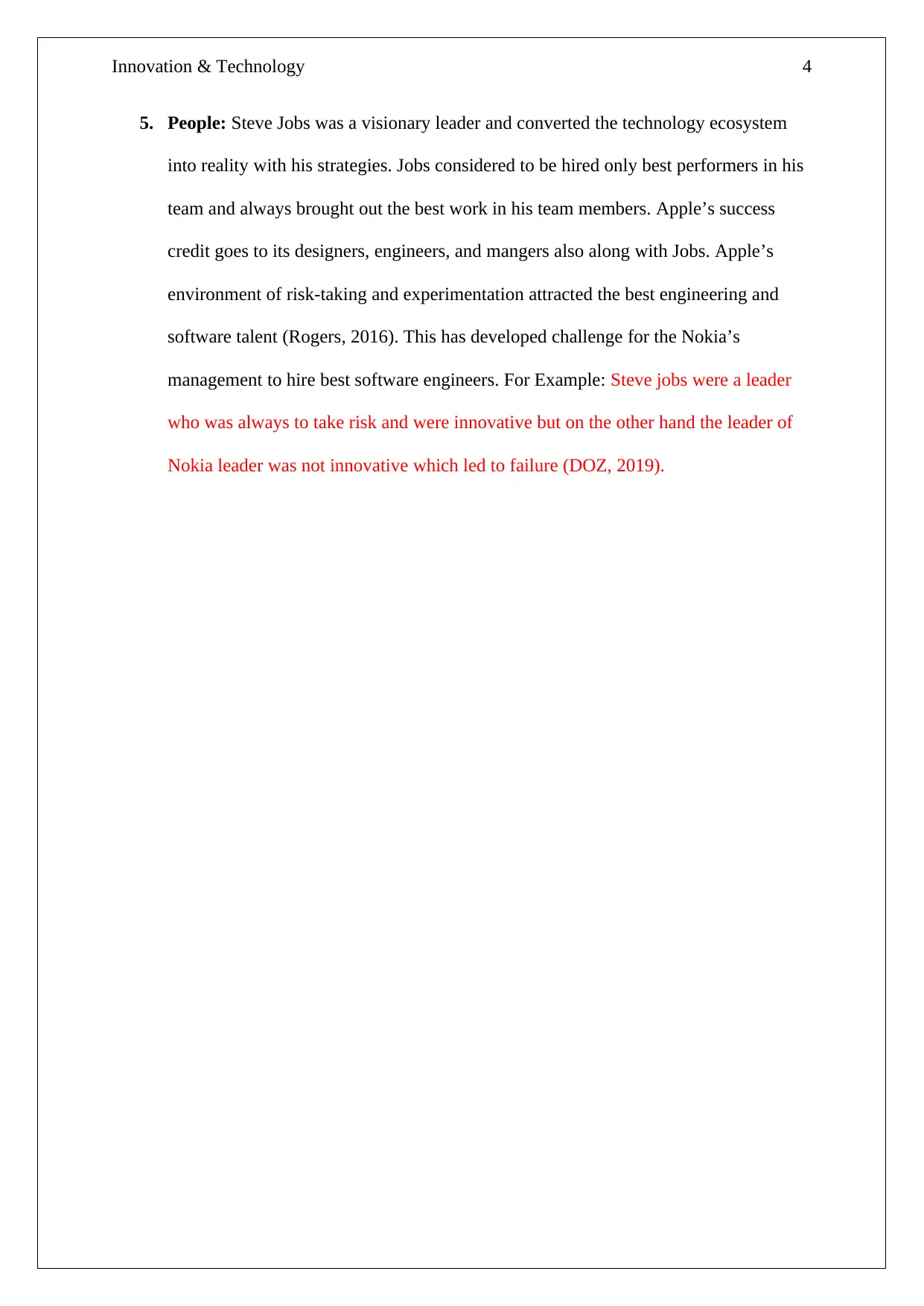
Innovation & Technology 4
5. People: Steve Jobs was a visionary leader and converted the technology ecosystem
into reality with his strategies. Jobs considered to be hired only best performers in his
team and always brought out the best work in his team members. Apple’s success
credit goes to its designers, engineers, and mangers also along with Jobs. Apple’s
environment of risk-taking and experimentation attracted the best engineering and
software talent (Rogers, 2016). This has developed challenge for the Nokia’s
management to hire best software engineers. For Example: Steve jobs were a leader
who was always to take risk and were innovative but on the other hand the leader of
Nokia leader was not innovative which led to failure (DOZ, 2019).
5. People: Steve Jobs was a visionary leader and converted the technology ecosystem
into reality with his strategies. Jobs considered to be hired only best performers in his
team and always brought out the best work in his team members. Apple’s success
credit goes to its designers, engineers, and mangers also along with Jobs. Apple’s
environment of risk-taking and experimentation attracted the best engineering and
software talent (Rogers, 2016). This has developed challenge for the Nokia’s
management to hire best software engineers. For Example: Steve jobs were a leader
who was always to take risk and were innovative but on the other hand the leader of
Nokia leader was not innovative which led to failure (DOZ, 2019).

Innovation & Technology 5
References
Above Avalon., 2019. Apple Has the Best Business Model for Generating Cash [Online]
Available at: https://www.aboveavalon.com/notes/2017/8/15/apple-has-the-best-business-
model-for-generating-cash
DOZ, Y., 2019. The strategic decisions that caused Nokia’s failure. [Online] Available at:
https://www.businessamlive.com/strategic-decisions-caused-nokias-failure/
Itif, 2015. Apple and Nokia: The Transformation from Products to Services. [Online]
Available at: http://www2.itif.org/2015-transformation-products-services.pdf.
McCray, J.P., Gonzalez, J.J. & Darling, J.R., 2011. McCray, J.P., Gonzalez, J.J.Crisis
management in smart phones: the case of Nokia vs Apple. European Business Review, 23(3),
pp.240-55.
Mobile Opportunity, 2007. The war between Nokia and Apple. [Online] Available at:
http://mobileopportunity.blogspot.com/2007/09/war-between-nokia-and-apple.html.
Panzarino, M., 2012. Why Nokia Can't match the profit of the iPhone. [Online] Available at:
https://thenextweb.com/apple/2012/05/31/why-nokia-cant-match-the-price-of-the-iphone/.
Rogers, D.L., 2016. The Digital Transformation Playbook: Rethink Your Business for the
Digital Age. New York: Columbia University Press.
Rogers, D., 2019. Mastering Disruptive Business Model. [Online] Available at:
https://globalcenters.columbia.edu/sites/default/files/content/santiago/EVENTS/03-DRogers-
Mastering%20Disruptive%20Business%20Models.pdf.
References
Above Avalon., 2019. Apple Has the Best Business Model for Generating Cash [Online]
Available at: https://www.aboveavalon.com/notes/2017/8/15/apple-has-the-best-business-
model-for-generating-cash
DOZ, Y., 2019. The strategic decisions that caused Nokia’s failure. [Online] Available at:
https://www.businessamlive.com/strategic-decisions-caused-nokias-failure/
Itif, 2015. Apple and Nokia: The Transformation from Products to Services. [Online]
Available at: http://www2.itif.org/2015-transformation-products-services.pdf.
McCray, J.P., Gonzalez, J.J. & Darling, J.R., 2011. McCray, J.P., Gonzalez, J.J.Crisis
management in smart phones: the case of Nokia vs Apple. European Business Review, 23(3),
pp.240-55.
Mobile Opportunity, 2007. The war between Nokia and Apple. [Online] Available at:
http://mobileopportunity.blogspot.com/2007/09/war-between-nokia-and-apple.html.
Panzarino, M., 2012. Why Nokia Can't match the profit of the iPhone. [Online] Available at:
https://thenextweb.com/apple/2012/05/31/why-nokia-cant-match-the-price-of-the-iphone/.
Rogers, D.L., 2016. The Digital Transformation Playbook: Rethink Your Business for the
Digital Age. New York: Columbia University Press.
Rogers, D., 2019. Mastering Disruptive Business Model. [Online] Available at:
https://globalcenters.columbia.edu/sites/default/files/content/santiago/EVENTS/03-DRogers-
Mastering%20Disruptive%20Business%20Models.pdf.
⊘ This is a preview!⊘
Do you want full access?
Subscribe today to unlock all pages.

Trusted by 1+ million students worldwide
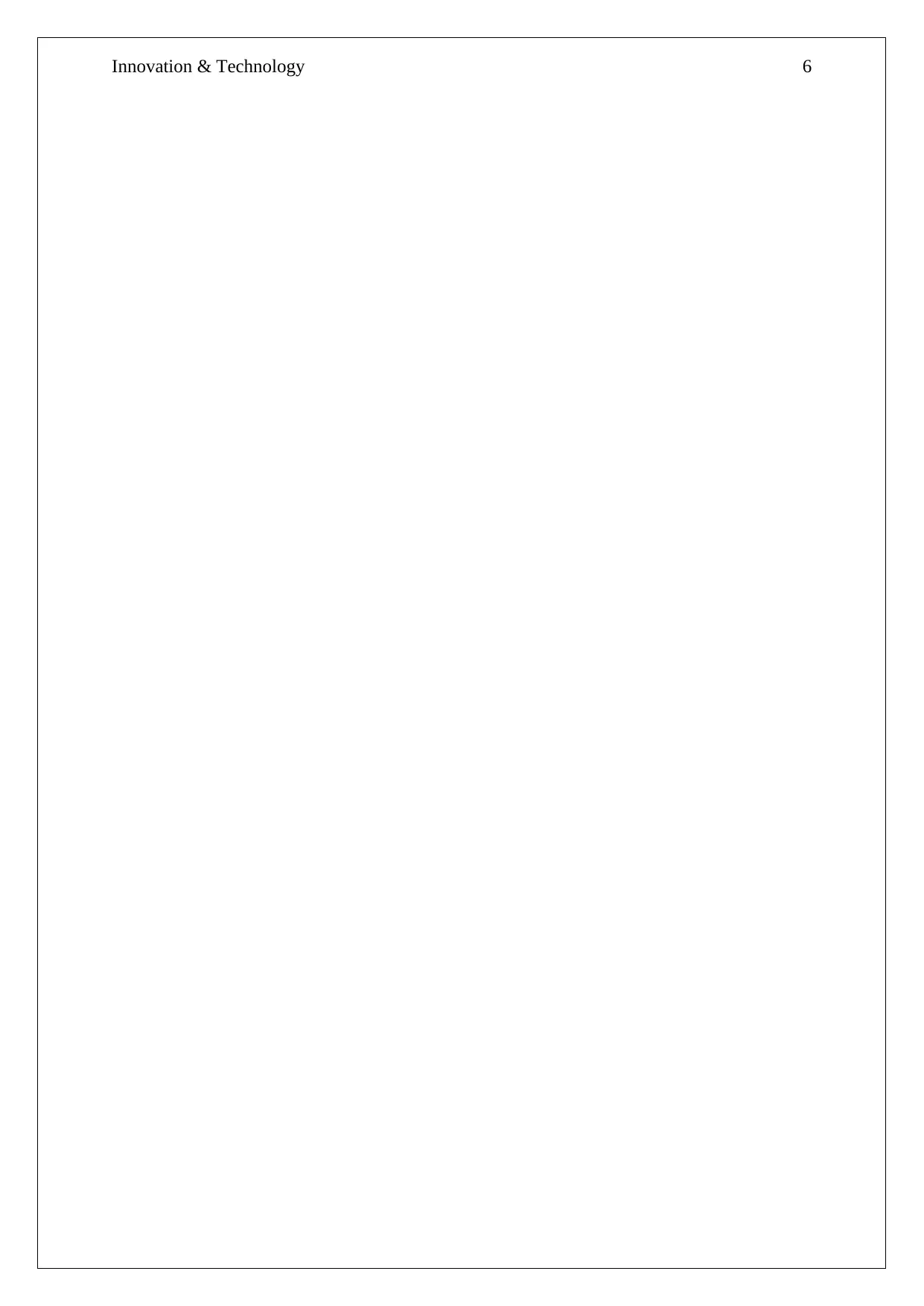
Innovation & Technology 6
1 out of 7
Related Documents
Your All-in-One AI-Powered Toolkit for Academic Success.
+13062052269
info@desklib.com
Available 24*7 on WhatsApp / Email
![[object Object]](/_next/static/media/star-bottom.7253800d.svg)
Unlock your academic potential
Copyright © 2020–2025 A2Z Services. All Rights Reserved. Developed and managed by ZUCOL.





